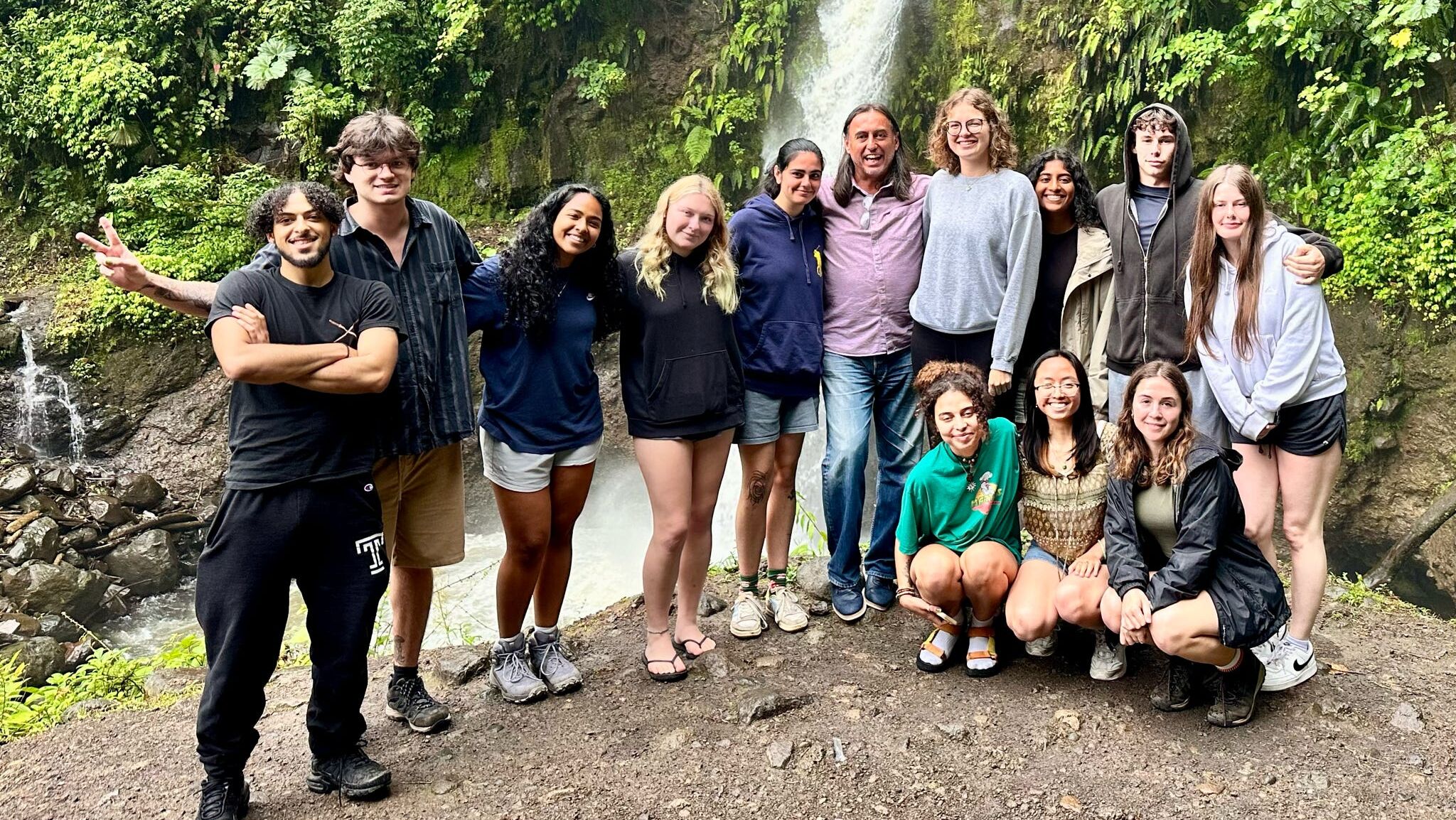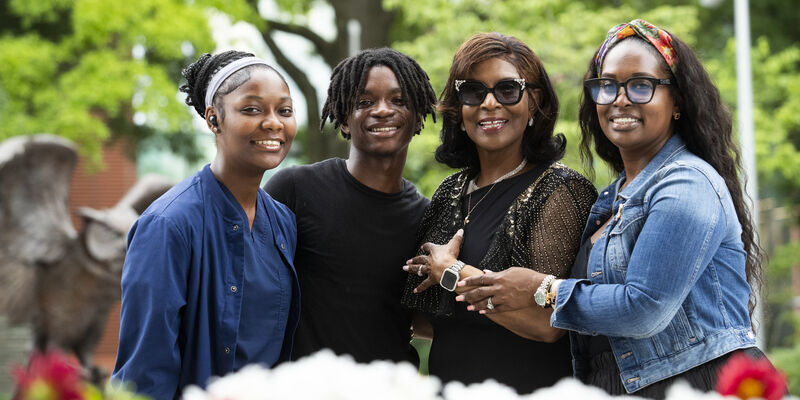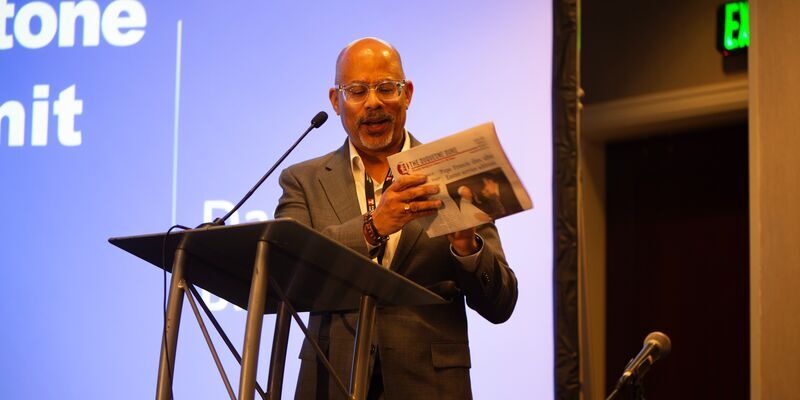Temple students learn about sustainability in Costa Rica study abroad program
College of Science and Technology Dean Miguel Mostafa taught the four-week course that explores alternative energy solutions through Costa Rica’s many renewable energy plants.

When College of Science and Technology (CST) Dean Miguel Mostafa set out to teach a course abroad on sustainability and renewable energies, Costa Rica was the natural choice. The Central American country is on pace to produce all its electricity from renewable sources by 2050. Scattered throughout its rainforested landscape are hydroelectric, biomass and geothermal power plants, as well as biological field stations and eco communities dedicated to preserving Costa Rica’s biodiversity, which ranks among the top countries globally per capita.
“The reason why we come to Costa Rica is because their generation of electricity is more than 98% based on renewable energies,” said Mostafa, who is a physicist by trade and holds degrees in nuclear engineering and physics. He and a group of 12 Temple students recently returned from this year’s Temple Summer in Costa Rica program, which ran from May 15 to June 9. “It’s a very interesting place for students to learn about how the U.S. could transition away from fossil fuels.”
Mostafa first taught abroad in Costa Rica in 2008 when he was at the University of Utah. He continued the program as his career took him to institutions like Colorado State University and Penn State University. Now in his second year as dean of CST, the timing finally worked out to launch the program at Temple.
The four-week program welcomes undergraduate students from across the university, who can earn three credits in one of five different courses, including two in the Honors program. The students in this year’s cohort came from CST, the Tyler School of Art and Architecture, and the College of Liberal Arts.
During the program, Mostafa and the students traveled Costa Rica learning about topics like natural renewable resources, conservation of energy, reforestation, natural farming and ecotourism.
Highlights from this summer’s program included visits to
- Palias II, a geothermal power plant which harnesses heat from beneath the Earth’s surface to produce electricity;
- Chocosuela, a hydroelectric power plant which harnesses waterpower to produce electricity (waterpower accounts for two-thirds of the energy generated by Costa Rica’s national electricity supplier);
- Rancho Margot, a self-sustained ranch that generates its own electricity from a micro-hydropower turbine, grows its own food and heats its water using solar heaters; and
- La Selva Biological Station in Sarapiqui, a protected rainforest area operated by a consortium of universities and research institutions.
The trip was the first time that psychology major Sophia Grasela, Class of 2027, had traveled abroad.
“I’d never really been out of the country before, so it was just really cool to be somewhere that’s completely different,” the South Philly native said. “It was also super interesting to get a hands-on learning experience. If you’re studying topics like sustainability and renewable energies, it’s a lot easier to understand when you can actually visit the power plants.”
Mostafa also planned visits to museums, beaches, volcanoes and other places where students can experience life in Costa Rica. Grasela’s favorite leg of the trip was a visit to Manuel Antonio, a national park with beautiful beaches and an abundance of wildlife, including monkeys, sloths and armadillos.
“We try to mix in a little bit of everything—it’s not just physics and energy,” Mostafa said. “The students get to experience a very different country, and I think they really appreciate it.”
Learn more about the annual Temple Summer in Costa Rica program.


